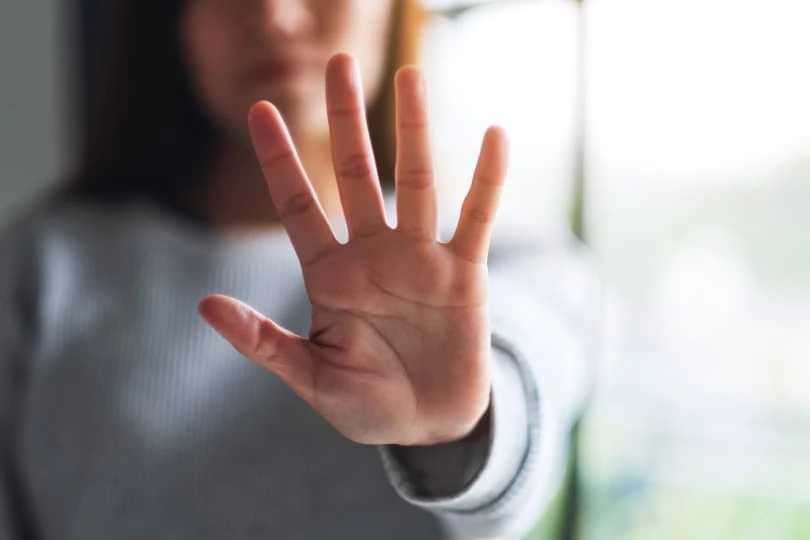“You’d be such a pretty girl if you just lost a little weight”… “You’re kind of short for a guy”… “You’d have a nice figure if you worked out more”… “You’ve got a butt like a combine harvester”… “Who would want you with that shape”?… “Go eat something, you look like you just came from a concentration camp”… “Look at that snout of hers”… “Your breasts look like candy under the carpet”…
Are the above-mentioned phrases familiar to you? Try to remember if you have ever felt bad because of someone who commented on how you look. Did you start going to the gym to lose weight because someone pointed out that you should?
Criticizing appearance (sometimes even unintentionally) is unfortunately part of our lives for an entire generation. It influences the relationship not only to our body but also to ourselves, mainly during adolescence. In this stage of life, the priority value is to fit into the group, not to stand out too much, and therefore we often put great emphasis on how we look.
This aspect causes that we are also very sensitive to the evaluation of our appearance by other people. It is also one of the reasons why eating disorders arise precisely during adolescence. Just one small remark about some “imperfection” can in sensitive individuals cause big mental problems.
Nowadays, in the era of social networks, the situation is even more demanding, because we can compare ourselves 24/7 on various internet platforms. There is constant pressure on us how to be “more perfect and beautiful,” because only that ensures we will be happy. Just look at Instagram profiles, according to which most people look happier than they really are. Media and social networks act on us like an infusion needle, which we cannot completely defend against, but we can learn to work with them correctly.
The risk of social networks
Operating through social networks is practically a necessity nowadays. We use them to communicate with friends, for self-presentation, preserving memories, and as a workspace. Their importance grows each year and with every generation. They have advantages and risks, some of which are still unknown to us.
Their development is part of the growth especially of today’s children and adolescents, for whom social networks are particularly significant. They represent a space where young people create their virtual identity through profiles filled with various content. Usually, they create an identity they wish to have. They share all kinds of posts, photos, and videos.
At the same time, they follow others’ profiles, which often leads to an increasing tendency to compare themselves, especially regarding appearance. They see various photos of “more beautiful and successful” peers and are more inclined to try to match them, since during adolescence appearance is a sign of success. Yet most profiles don’t reflect reality at all and use various beautifying filters.
During adolescence, appearance is a very sensitive matter. Its perception is largely influenced by others’ evaluations, unrealistic images or videos from social networks and magazines.
According to research by Kamil Kopecký (2022), only every second child is satisfied with their face. Only 46% of children reported satisfaction with their own body. Dissatisfaction is also reflected in what they would like to change and improve about themselves. According to the same research, a third of children wish to lose weight, more than 30% want to gain muscle mass. Other means to improve appearance included changing hair color or getting tattoos. Over 8% of children would like to change the size and shape of their buttocks or breasts.
Bullying in the modern age
As mentioned earlier, social networks are an integral part of our lives—they serve for self-presentation but also make it easier to express hatred or bully others. Things we wouldn’t dare do in “real life” often happen online, mainly due to anonymity. This poses a significant risk, especially during the sensitive period of adolescence.
There are various forms of bullying. One of them is called body shaming. Like other types of bullying, this form of ridicule has moved increasingly onto social networks in recent years, where children and adolescents encounter it more and more.
According to research by Kamil Kopecký (2022), one-third of Czech children have faced mockery about their appearance online, while in real life it was even more than half. Most often, children were teased about their body (29%) or face and hair (26%). Insults related to clothing or mobile phones (brand, age of device) were experienced by 22% of children. Only 8% of children admitted they would mock someone in real life, while in the virtual world this was 13%.
What consequences can body shaming have
Adolescents’ sensitivity to negative comments about their appearance can have serious consequences. A negative remark about someone’s body—even if it seems like a small jab to some—can lead to the development of eating disorders across the spectrum.
According to research, for over 6% of children, experiencing some form of body shaming online triggered the use of addictive substances, whether socially accepted, tolerated, or illegal. About 4% of children showed psychosomatic defense reactions, experiencing physical symptoms such as headaches, stomach pain, or nausea. Sleep disorders, a sensitive indicator of psychological distress, appeared in 7% of children (Kopecký, 2022).
Appearance emphasis is of course a concern for adults too. But appearance is just the surface of our personalities. We never truly know why someone looks the way they do, what they’ve been through, or what they are experiencing. No one asks. We often judge only based on appearances.
Sometimes body shaming happens unknowingly. The other person may not mean harm, but it still hurts. For example, if you tell a girl, “You’re so skinny,” you might not mean it badly, but you don’t know why she looks that way. Maybe she’s ill, maybe she’s worried, maybe she struggles to gain weight. Your statement unintentionally hurts her.
This leads me to reflect on how important it is to watch what you say to others. Before judging someone else, stop and ask yourself if it’s really necessary to say it to them.

How to fight against body shaming
Unfortunately, we cannot control what others say about us, but we can develop a kind of defensive approach toward it. We can become resilient against unwanted remarks.
- Before you resort to judging someone else, pause and ask yourself if it’s really necessary to tell them. Reflect on how you would feel if you were in that person’s shoes.
- Do not tolerate body shaming — neither from others nor yourself. It’s important that we limit hurtful behavior and speak to ourselves and those around us with tolerance for differences and imperfections. At the same time, we shouldn’t join in humiliating others or ignore it. Tolerating insults focused on appearance leads to such behavior becoming accepted and normalized.
- Work on your self-confidence. It’s essential to realize that every body shape and size is normal and that no one has a perfect appearance. Healthy self-confidence allows us to accept ourselves as we are and feel more comfortable in our own bodies. With healthy self-confidence, we won’t let others’ criticism affect us or try to conform to unrealistic beauty ideals. At the same time, it’s important to understand that healthy self-confidence isn’t something we automatically have from birth. It’s a process that develops throughout life and requires self-work. Various forms of therapy can also contribute to its growth.
- Focus your attention on other qualities of the person. Appearance is the first thing you notice about someone, but it doesn’t define who they are. You never know why a person looks the way they do. So try to focus on their other qualities instead.
- Show empathy towards others. If you meet someone who has been hurt by body shaming, offer them support and encouragement.
- Support body diversity. Every human body is unique and different. Many life factors influence its appearance, often beyond our control. It’s important to celebrate body diversity and challenge societal beauty standards that are often unrealistic and discriminatory.
- Remember that no one is perfect; every body has its own specifics. This also means that we can never please everyone.
In conclusion, it’s important to emphasize once again that body shaming can have catastrophic consequences for individuals, potentially leading to death. If you or someone close to you has become a victim and you notice a decline in mental health, don’t hesitate to seek professional help.
This article was created in collaboration with the online therapy service Shifto and under the auspices of Alive Cares. Considering online therapy? Don’t forget that with your ISIC card, you get 20% off each session at Shifto.
Author: Mgr. Lucie Holubičková
Addictologist, therapist






